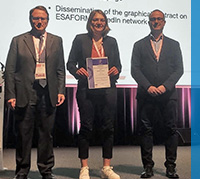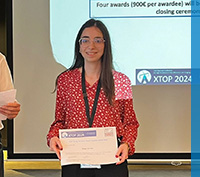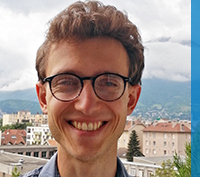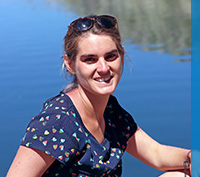PhD defence of Sacha El Aouad
9 December 2022
Sacha El Aouad will defend his PhD in Computational Mathematics, High Performance Computing and Data on Dec. 9, 22.
Numerical and parallel modeling of anisotropic fitted mesh for industrial quenching applications.

Sacha El Aouad conducted her PhD work in the CFL team under the supervision of Elie Hachem and Aurélien Larcher. She will defend hers PhD in Computational Mathematics, High Performance Computing and Data, on December 9, 22 in front of the following jury:
– Suzanne Michelle Shontz, University of Kansas
– Joan Baiges, Universitat Polytècnica de Catalunya
– Johan Hoffman, KTH, Royal Institute of Technology, Suède
– Giulia Lissoni, SCC Consultants
– Elie Hachem, Mines Paris – PSL, CEMEF
– Aurélien Larcher, Mines Paris – PSL, CEMEF
Abstract:
The development of efficient methods to simulate multi-components systems is among engineering challenges and still a need for industrials, especially in the case of fluid-structure interaction or conjugate heat transfer. The quenching process falls within this framework since it impacts directly the change in the mechanical and physical property of industrial parts. Many numerical formulation of this process have been developed, but considerable imprecision still exists, especially because of the assumptions made on the use of simple geometries and approximate quench environments. For the quenching process, several types of geometries with different complexities are studied and analyzed. Therefore, generating meshes for such complex geometries is a challenge. By improving methods for multi-physics, particularly fluid-thermal and fluid-solid couplings, the overall mathematical framework of this thesis will address this challenge.
In this work, the Immersed Volume Method is extended: a new anisotropic adaptive body-fitted mesh method is proposed. Its simplicity and generality allow it to tackle complex geometries, and its robustness allow to deal with complex physical problems. Two successive iterations are combined: first, gradient-based metric construction uses the gradients of the level-set function of any immersed object to generate an anisotropic well-adapted mesh. It is followed by a geometric adaptation using R-adaptation and swapping in order to create a sharp fitted mesh. This new approach achieves the desired local geometry resolution of a body-fitted mesh and obtains the needed numerical accuracy at the interface due to the anisotropic unstructured elements.
The new approach will allow to solve fluid-solid interactions and CFD problems including boundary layer, curvature, and high-gradient solutions, covering 2D and 3D parallel applications, and real-world practical problems.
Keywords: Immersed methods, Anisotropic Adaptation, Numerical modelling, Fitted Mesh, Level-set function, CFD








